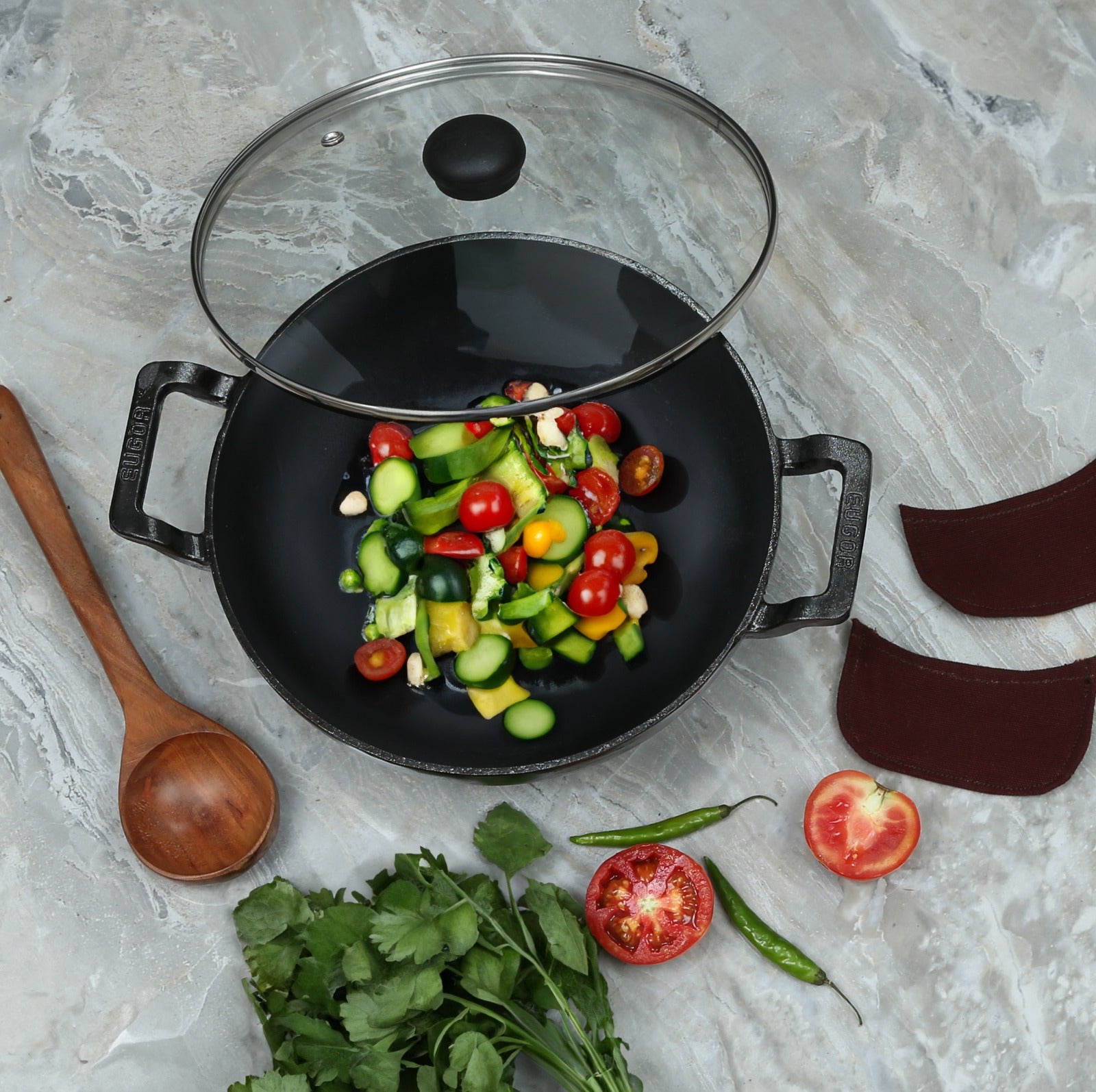
Cast Iron Cooking Outdoors: Tips for Campfire Culinary Adventures
Introduction
When it comes to outdoor cooking, few methods rival the time-honoured tradition of cast iron cooking over an open campfire. Whether you're a seasoned outdoor enthusiast or a novice camper, mastering the art of cast iron cooking can elevate your culinary adventures to new heights. In this article, we'll explore the joys of cooking with cast iron outdoors and provide you with valuable tips to make your campfire meals truly memorable.
The Magic of Cast Iron
Cast iron cookware has been a staple in kitchens for centuries, and its durability and versatility make it an excellent choice for outdoor cooking. Here's why cast iron is your best companion for campfire culinary experiences:
1. Superior Heat Retention
One of the key advantages of cast iron is its ability to retain heat evenly. This means your food will cook uniformly, preventing hotspots and ensuring delicious results.
2. Durability
Cast iron is virtually indestructible, making it perfect for rugged outdoor environments. It can withstand high temperatures, heavy use, and even the occasional drop without losing its functionality.
Choosing the Right Cast Iron Cookware
Before you embark on your outdoor cooking adventure, it's essential to select the right cast iron cookware for your needs. Here's a breakdown of the must-have items:
3. Cast Iron Skillet
A versatile piece of cookware, the cast iron skillet is perfect for searing, frying, baking, and more. Its wide, flat surface allows you to cook multiple items at once.
4. Dutch Oven
A campfire classic, the Dutch oven is ideal for slow-cooking stews, soups, and even baking bread. Its heavy lid allows for coals to be placed on top, creating an oven-like cooking environment.
Preparing Your Cast Iron Cookware
Properly maintaining and preparing your cast iron cookware is crucial for successful outdoor cooking. Follow these steps:
5. Seasoning
Before your first use, season your cast iron cookware by coating it with a thin layer of vegetable oil or lard and heating it in the oven. This process creates a non-stick surface and prevents rust.
6. Cleaning
Avoid using soap on your cast iron cookware, as it can remove the seasoning. Instead, use hot water and a stiff brush to clean it. Dry thoroughly to prevent rust.
Campfire Cooking Techniques
Now that you're equipped with the right cast iron cookware and have prepared it adequately, let's dive into some campfire cooking techniques:
7. Proper Heat Management
Adjust the distance of your cookware from the flames to control the cooking temperature. Moving it closer to the flames increases heat, while raising it higher reduces heat.
8. Campfire Grates
Invest in a campfire grate or grill for more precise cooking. These accessories provide a stable cooking surface and help you control the heat.
Campfire Recipes
No campfire culinary adventure is complete without delicious recipes. Here are two classic outdoor recipes to get you started:
9. Campfire Skillet Breakfast
Ingredients:
- Eggs
- Bacon
- Potatoes
- Bell peppers
- Onions
- Salt and pepper
Instructions:
- Heat your cast iron skillet over the campfire.
- Add bacon and cook until crispy, then set it aside.
- Sauté potatoes, bell peppers, and onions in the bacon fat.
- Crack eggs into the skillet and cook to your desired level of doneness.
- Season with salt and pepper and crumble the crispy bacon on top.
10. Dutch Oven Chili
Ingredients:
- Ground beef
- Onion
- Garlic
- Kidney beans
- Crushed tomatoes
- Chili powder
- Cumin
- Salt and pepper
Instructions:
- Brown the ground beef in your Dutch oven.
- Add diced onions and minced garlic; sauté until translucent.
- Stir in kidney beans, crushed tomatoes, and spices.
- Cover with the Dutch oven lid and let it simmer over the campfire for an hour or more.
Safety Considerations
11. Fire Safety
Always follow fire safety guidelines when cooking over an open flame. Keep a bucket of water or sand nearby for emergencies, and never leave the fire unattended.
12. Handling Hot Cookware
Remember that cast iron cookware gets extremely hot. Use oven mitts or heavy-duty gloves when handling it to prevent burns.
Conclusion
Embarking on a campfire culinary adventure with cast iron cookware can turn ordinary outdoor meals into extraordinary experiences. With the right equipment, preparation, and techniques, you can savor delicious meals under the open sky. So, gather around the campfire and enjoy the magic of cast iron cooking!
FAQs
Q1. Can I use soap to clean my cast iron cookware?
No, it's best to avoid soap as it can remove the seasoning. Stick to hot water and a stiff brush for cleaning.
Q2. Can I use cast iron cookware on a gas stove?
Yes, cast iron cookware is versatile and can be used on gas stoves, electric stoves, and campfires.
Q3. How often should I re-season my cast iron cookware?
Re-seasoning is necessary when the cookware loses its non-stick properties or shows signs of rust. Depending on use, this can range from several months to a year.
Q4. What is the best way to store cast iron cookware?
Store your cast iron cookware with a paper towel or cloth between stacked pieces to prevent moisture buildup and rust.
Q5. Can I cook acidic foods in cast iron?
While it's generally not recommended for prolonged periods, occasional cooking of acidic foods like tomatoes is acceptable. Just be sure to re-season your cookware afterwards.
Shop our best quality cast iron cookware for your family.
- Choosing a selection results in a full page refresh.
!















